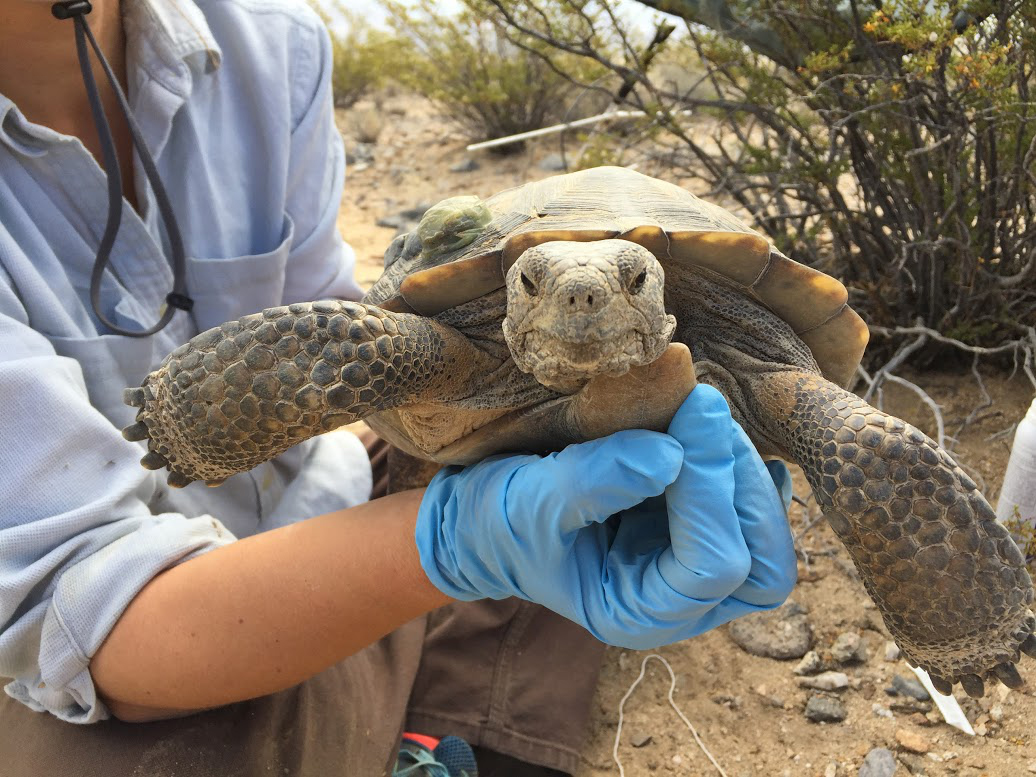Multiyear monitoring of survival following mitigation‐driven translocation of a long‐lived threatened reptile. Published in the latest issue of Conservation Biology.
Translocation is used by managers to mitigate the negative impacts of development on species. Moving individuals to a new location is challenging, and many translocation attempts have failed. Robust, post-translocation monitoring is therefore important for evaluating effects of translocation on target species. We evaluated the efficacy of a translocation designed to mitigate the effects of a utility-scale solar energy project on the U.S. federally listed Mojave desert tortoise (Gopherus agassizii). The species is a long-lived reptile threatened by a variety of factors, including habitat loss due to renewable energy development in the Mojave Desert and portions of the Colorado Desert in southern California (southwestern United States). We translocated 58 individual tortoises away from the project’s construction site and intensively monitored them over 5 years (2012–2017). We monitored these individuals and tortoises located in the translocation release area (resident tortoises; n = 112) and control tortoises (n = 149) in a nearby location. We used our tortoise encounter data and known-fate survival models to estimate annual and cumulative survival. Translocated tortoises in each of 2 size classes (120–160 mm, >160 mm) did not survive at lower rates than resident and control tortoises over the study period. For models with different sets of biotic and abiotic covariates, annual and cumulative estimates of survival were always >0.87 and >0.56, respectively. Larger tortoises tended to have higher survival, but translocated tortoises were not differentially affected by the covariates used to model variation in survival. Based on these findings, our translocation design and study protocols could inform other translocation projects for desert species. Our case study highlights the benefits of combining rigorous scientific monitoring with well-designed, mitigation-driven management actions to reduce the negative effects of development on species of conservation concern.
[The paper is available here.]

